Iran’s Role in the New Middle East Conflict
November 14, 2023
Despite claiming a mostly isolated status for the past four decades since the 1979 revolution, Iran manages to send personnel and/or weapons to many major conflicts around the Middle East region, quietly participating in and shaping world events while also giving themselves the plausible deniability of doing so. Additionally, their cyber capabilities have quickly grown and improved, meaning they are able to also act in the digital realm, yet obfuscate these activities as well. As Iran trains guerrilla fighters, trains and funds militias that actively attack western military bases and personnel in the Middle East region, and couples their physical activities with digital aggression, they must be closely monitored and observed to properly understand their growing capabilities and levels of involvement in various conflicts.
Iranian ground activity in Iraq was observed at the beginning of the US invasion in 2003, where coalition forces routinely encountered Iranian influence and weapons. Despite the formal end of coalition efforts in Iraq, Iran has had and maintains a proxy-presence in multiple Middle East conflicts, including active foot soldiers in Yemen, Syria, Lebanon, and other Middle Eastern states and present-day conflicts. Iran has recently sent fighters and weapons to Belarus to support Russian aggression in Ukraine, expanding their operations and support to a European conflict.
Iran’s activity supporting various militant groups with weapons, funds, cyber operations and personnel in and outside conflict is nothing new for them, which is why analysts are exploring their role, if any, in the current conflict between Israel and Hamas. Dating back to the Lebanese civil war in the 1970’s, Iran saw an opportunity to simultaneously support fellow Shiites and oppose Israel. Iran funded the Shiites and offered formal training to the guerilla groups, which cemented themselves as Hezbollah. Iran continued to fund, train, and arm Hezbollah throughout conflicts in the 1980s, such as the Southern Lebanon War; the 1990s, facilitating various kidnappings, suicide bombing attacks, and direct military battles along the Israeli border. In the 2000s, Hezbollah established Unit 3800 to target coalition forces in Iraq. During the 2010s, Hezbollah and IRGC forces protected and supported dictator Bashar al-Assad in Syria.
Possible support methods will vary in this latest conflict depending on other major military powers’ possible involvement, drone and other remote weapons use, and digital augmentation of physical attacks, including possible cyber warfare. This blog explores Iran’s recent activity, security posture, and response to the conflict between Hamas and Israel.
For many years Iran has consistently publicized controversial opinions to further its authoritarian views and leadership in the world using its state-controlled media:
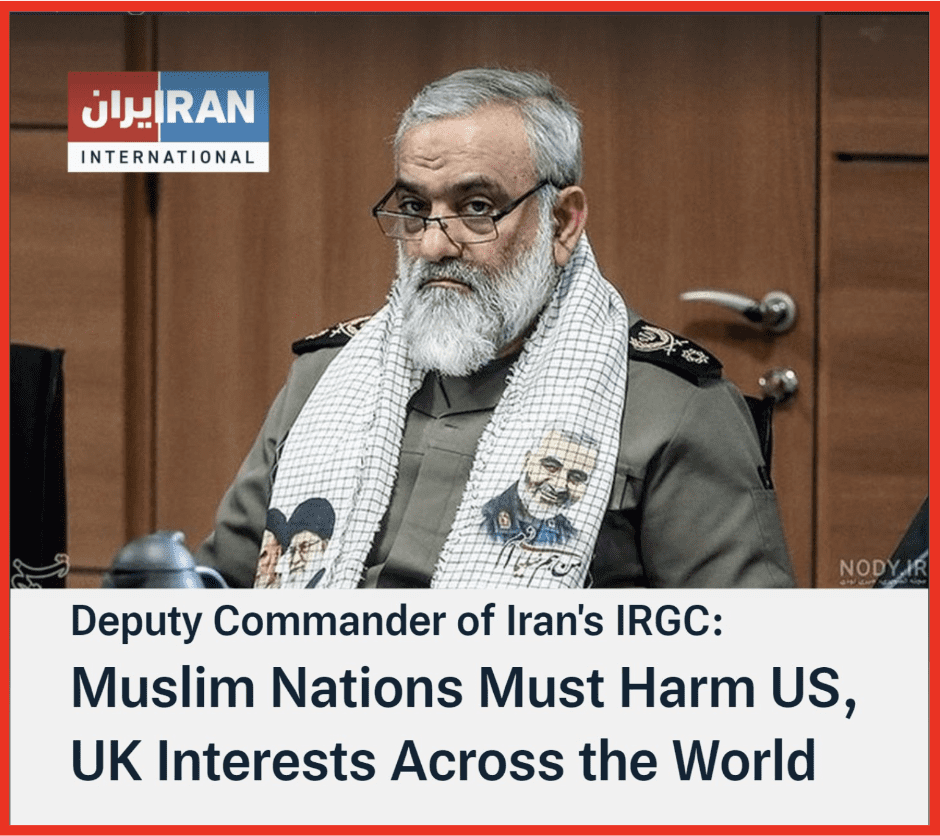
Anti-Western ideas are advertised with galvanizing calls for participants to rise and join forces to remove Western ideology, culture, and personnel from the Middle East region. The current conflict is no different, hybrid physical and cyber components are being utilized that Iran hypes up and pushes to maintain activity to further its goals of regaining international status on the world stage and coming back to global-power status, versus the isolated stance it has sustained since the 1979 revolution.
Prior to the October 7, 2023, attack on Israel, multiple news outlets claimed contingents of Hamas fighters trained at Iranian facilities in September 2023. Considering that Hamas went notably quiet in the months leading up to the attack, with reduced Telegram/online activity, and leading Intelligence agencies reportedly lacking insight into the coming attacks, these claims are difficult to substantiate, but merit observation.
Hezbollah
Lebanese based Hezbollah, which means “the party of Allah,” is a Shiite political party and militant group. The group took advantage of the Lebanese civil war to position themselves in power in the area.
Political party: حزب
Allah: الله
Hezbollah is anti-Western influence and anti-Israel:
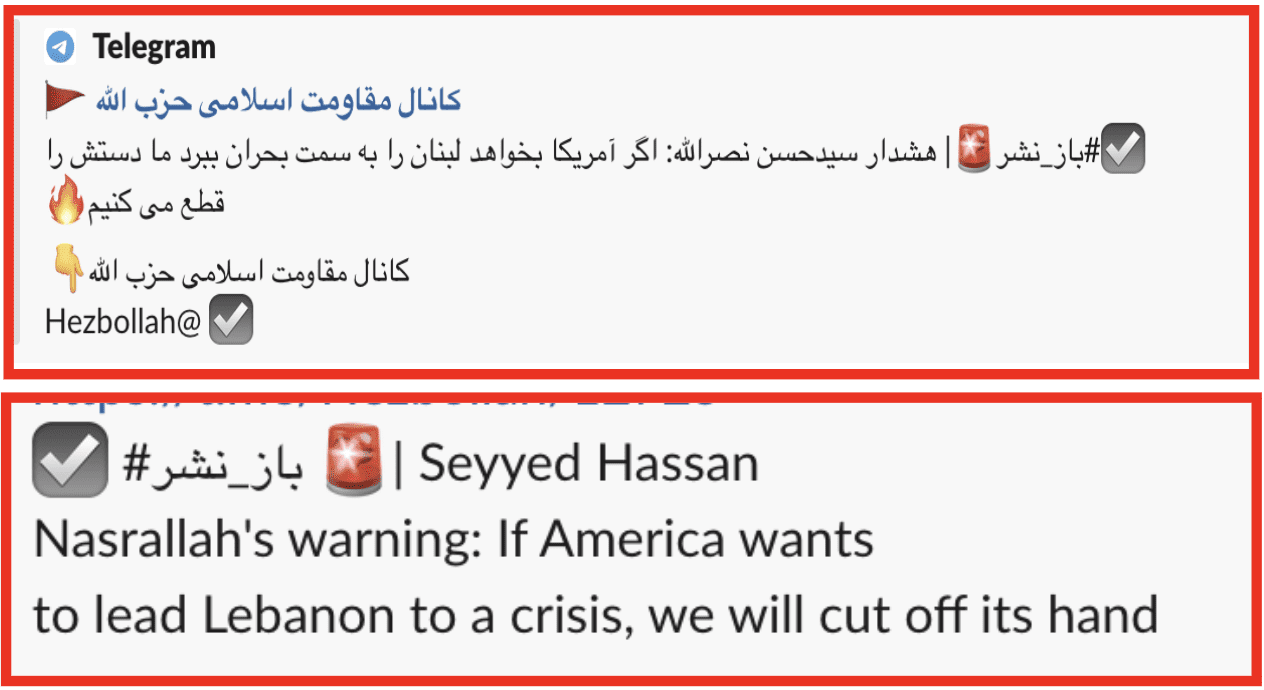
The Iranian theocracy took to supporting Hezbollah in the 1980s, nurturing them from a low-level, poorly organized militia into the regional powerhouse they are today with a healthy annual budget. While the exact amount is unknown, estimates from global governments put the operating budget in the hundreds of millions of dollars. The size of Hezbollah is also a rough estimate at 30,000 people, but this is impossible to confirm. They vow to expel western influence from the Middle East region, and use improvised explosive devices (IEDs), guerrilla tactics, and other asymmetric warfare in their physical operations. Hezbollah also provides Iran with plausible cover to deny their involvement in any operations Iran doesn’t want to publicly claim.
Considering the ties to Iran, it is no surprise that as Iranian cyber capabilities grew, so too did Hezbollah’s. Like so many other groups during times of conflict, Hezbollah also adopted cyber capabilities to augment their physical and psychological operations. Dating back to 2006, Hezbollah launched cyber-attacks against multiple countries who supported Israel during the 34-day war. In 2015, Hezbollah conducted operation “Volatile Cedar” which targeted Israeli defense sector websites and assets.
Currently, they have numerous Telegram channels in various languages which promulgate Iranian and Syrian state narratives and propaganda:
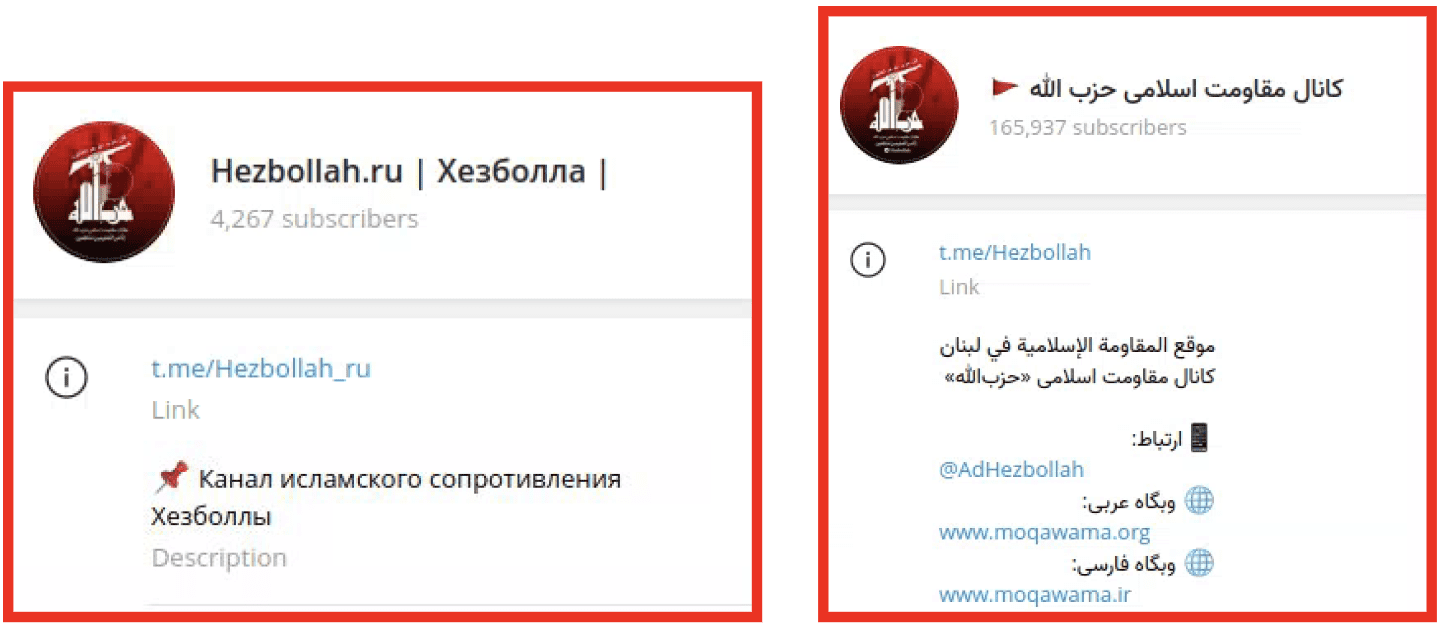
In this current conflict, Hezbollah has physically attacked Israeli defenses and equipment on the Israel/Lebanon border. They have also established Telegram channels specifically for this conflict to show war videos, events, and document them as events unfold, which DarkOwl are actively monitoring:
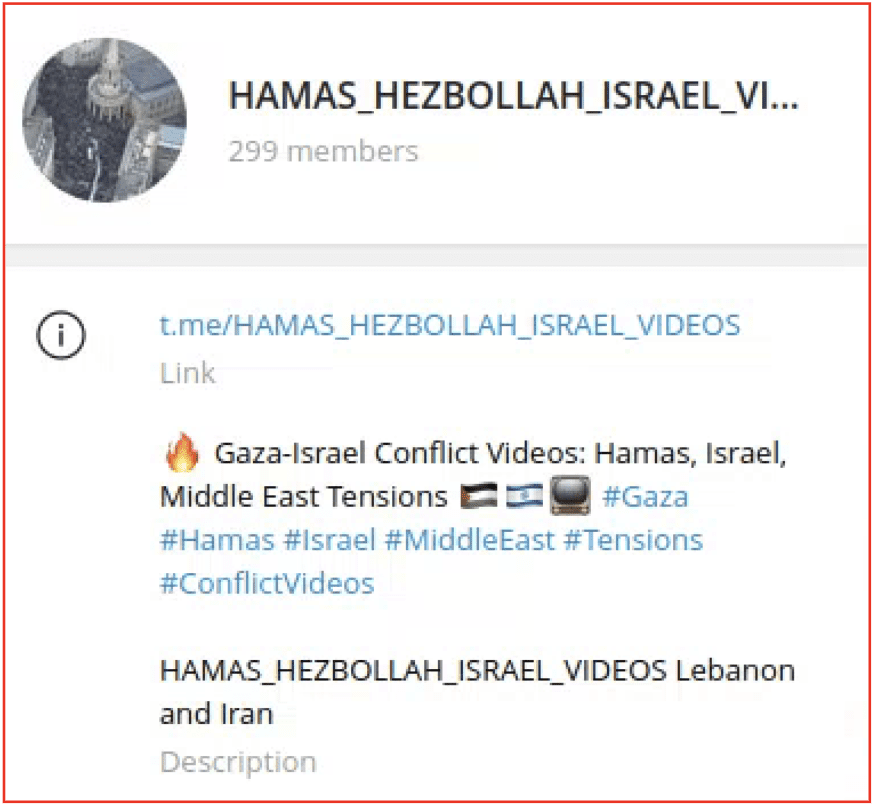
Kata’ib Hezbollah
Kata’ib Hezbollah, or “The Brigades” of Hezbollah, is the branch of Hezbollah that specifically operates in Iraq, with limited activity also observed in Syria. They are funded, supported, and trained by Iran as well as Lebanese Hezbollah. They have involved themselves in the Israel-Hamas conflict by declaring war on U.S. entities in Iraq and attacking them as retribution for U.S. support to Israel:
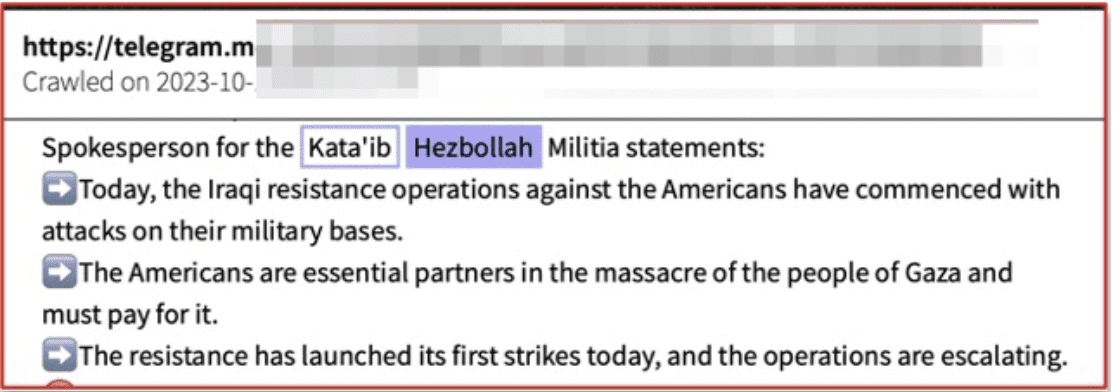
Badr Organization
The Badr Organization, a Shiite entity also funded and trained by Iran, is another group active in Iraq. Much like Kata’ib Hezbollah, they entered the public threats realm by criticizing US support for Israel, and threatened US entities in the region:
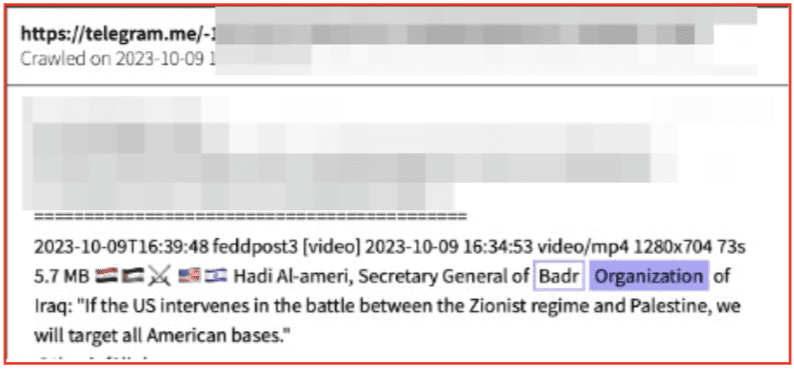
Houthis
Ansarullah, “Partisans of Allah” are better known as the Houthis, the name of the tribe from which they emerged in Yemen:
Partisans/supporters: أَنْصَار
Allah: الله
Both the Government of Iran and militant group Hezbollah are arms, training, and financial providers/supporters of the Houthis, a Shiite party of fighters who target western forces, Jewish residents of the Middle East, and other Middle Eastern nation states, such as Saudi Arabia and the United Arab Emirates.
Iran’s Houthi support is measurably less than the support it provides to Hezbollah. Much like Iran, the Houthis rely on irregular, guerrilla warfare tactics to remain elusive and unpredictable, yet effective. The Houthis are based in Yemen and have furthered proxy efforts, launching attacks against Saudi Arabia and other Gulf states from war-torn Yemen. These proxy groups are also involved in the latest Middle East conflict, both physically with weapons, claiming drone and missile attacks as well as digitally, galvanizing support for Palestine and Islam on Telegram and other chat platforms:

Telegram channels that follow the conflict have also recounted training, drills, and other Houthi activity, bringing the group into the media of war coverage:
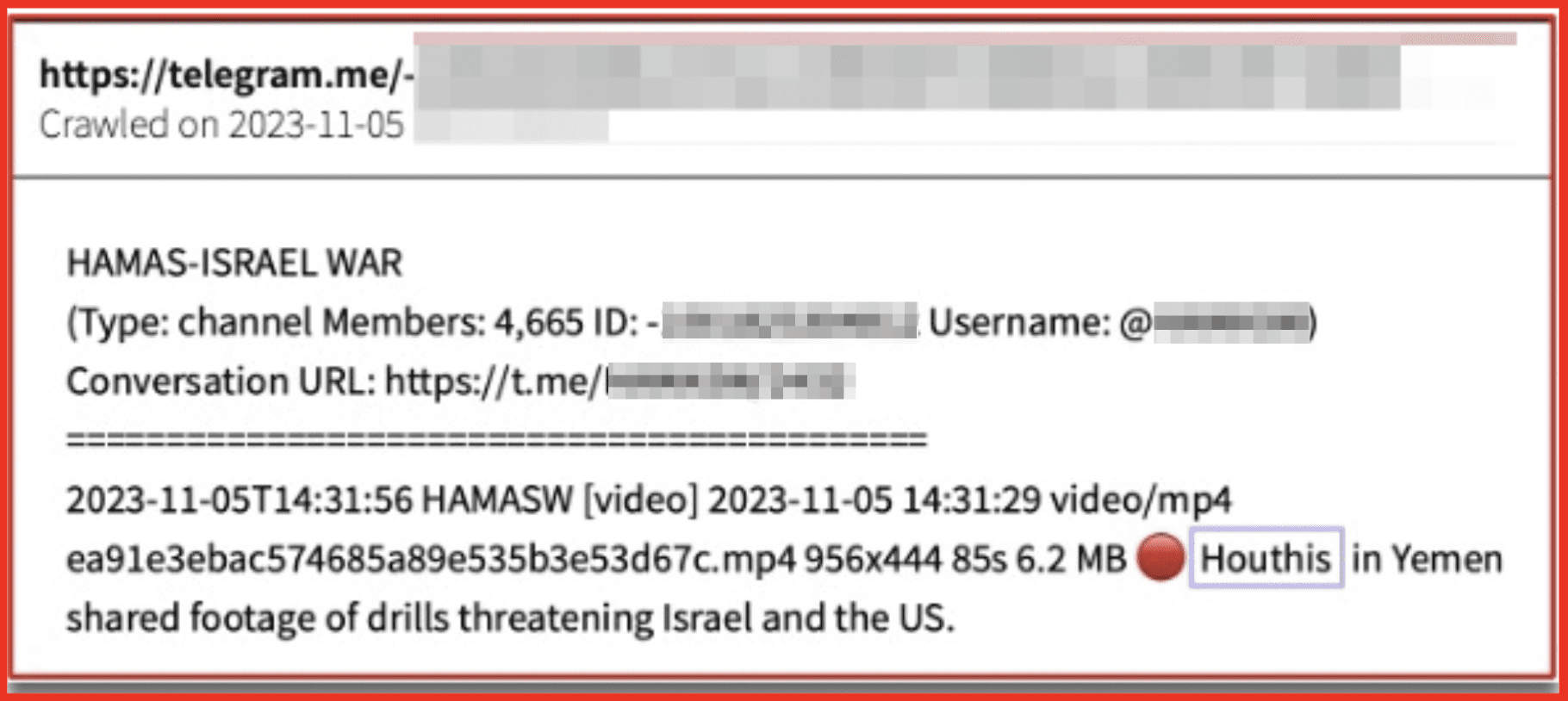
A Yemeni political figure demonstrates how the Houthis also turned to Telegram, and are engaging international parties in the current Middle East conflict:
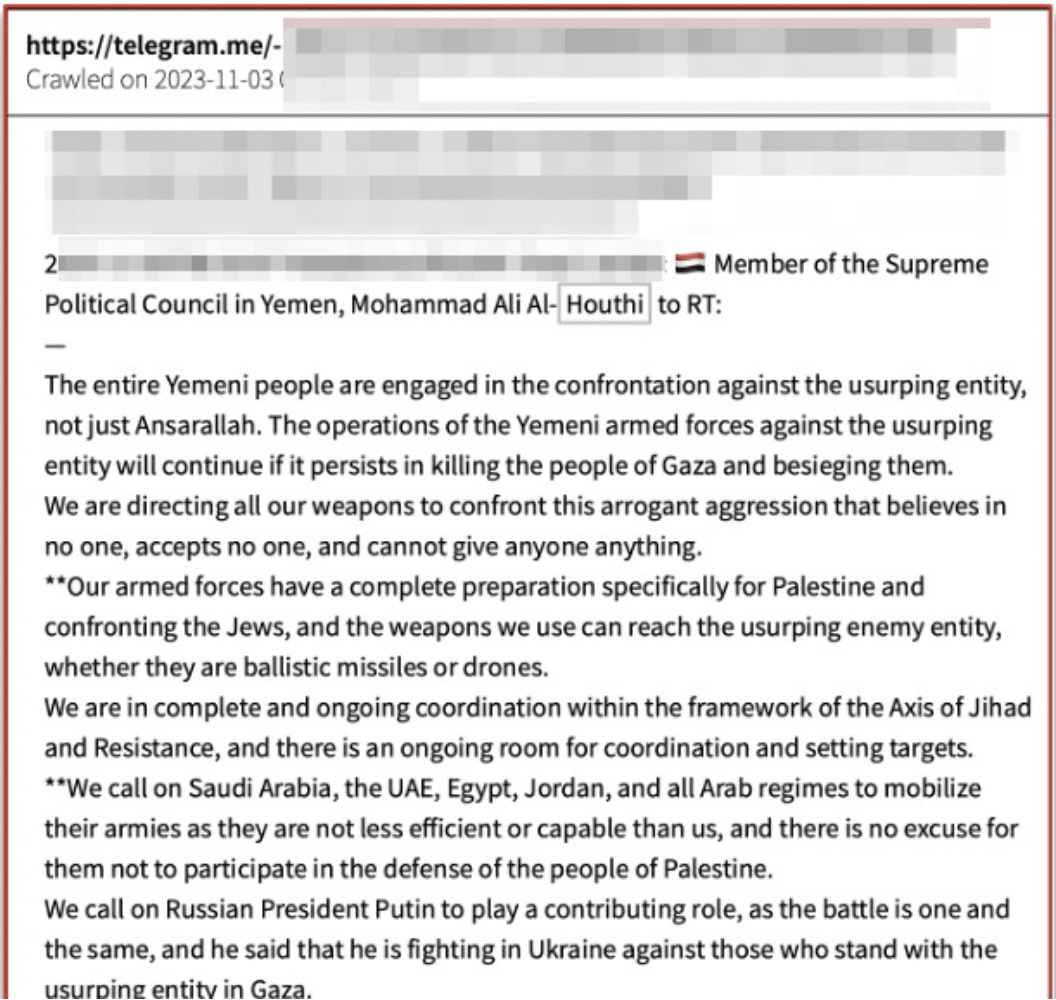
In addition to the more infamous Iranian proxy groups, other splinter supporters and lesser-known groups have emerged in both the digital/physical realms and espoused their support for Hezbollah, Hamas, and/or general pro-Palestinian efforts. Accessibility and connectivity make it easy for anyone with a device and connection anywhere in the world to jump into the fray of conflict and espouse their opinions. As this conflict rages on, more groups are expected to emerge. Their actual ties to bodies like the Governments of Iran, Syria, and other groups with an interest in the Middle East region will require diligent research and vetting.
Conclusion
Despite its self-described global isolation, which Iran claims is the fault of the US and the UK, Iran constantly involves itself in regional events in the Middle East, whether by funding/training/arming its many proxy groups, conducting offensive cyber attacks, or both. Considering its decades long history of involvement, Iran will stay enmeshed in the current Israel-Hamas conflict by arming Hezbollah and Hamas with drones and missiles to use, and propagating pro-Islamic, anti-Western and anti-Israeli messages on Telegram and other social media platforms, and bolstering support for eradicating the Middle East region of western influence in general.
DarkOwl plans to cover Iranian cyber and physical efforts, including Telegram and dark web activities, Government of Iran domestic and civilian targeting during recent civic strife, using technology to track Iranian dissidents, the state of Iran’s cyber program, state sponsored and criminal, and more in-depth Iranian material in 2024. Make sure to register for our weekly newsletter to get the latest.
Curious how darknet data applies to your use case? Contact us.
Explore the Products
See why DarkOwl is the Leader in Darknet Data
Products
Services
Use Cases















